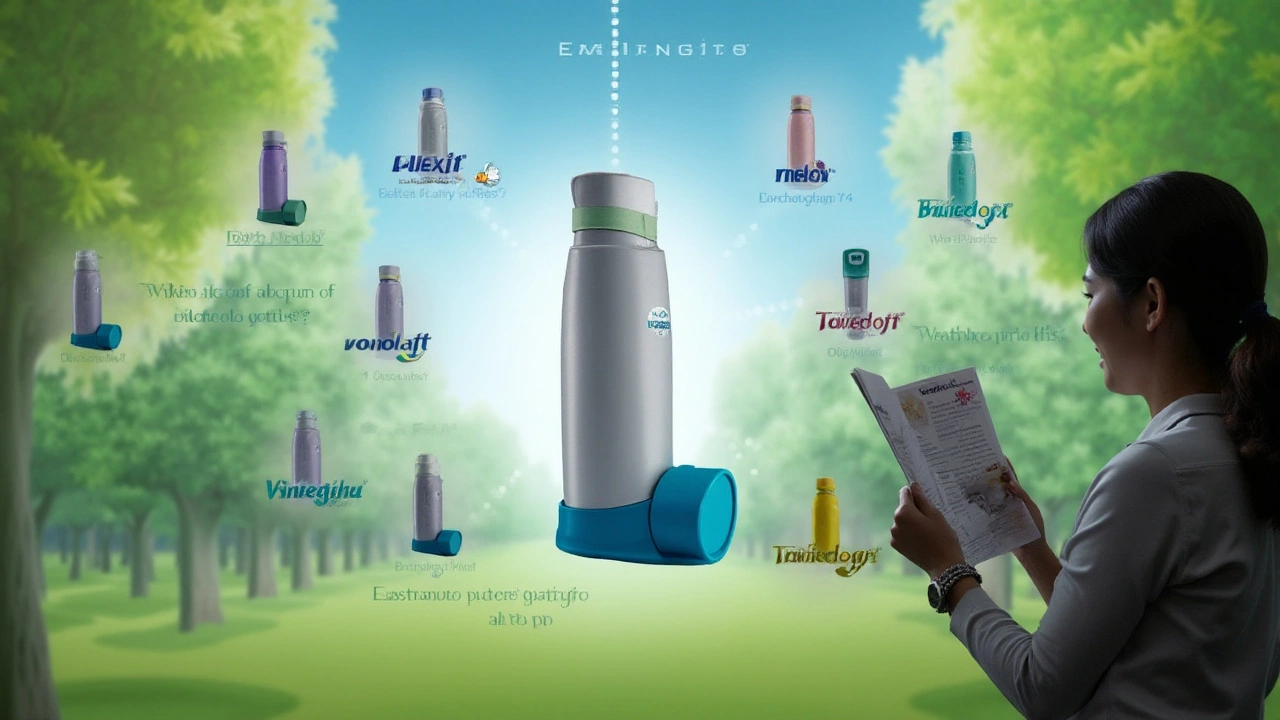Inhalers: Types, How to Use Them, and Safe Alternatives
Ever felt out of breath and unsure which inhaler to use? Inhalers come in several types and knowing the difference can save time, money, and hassle. This page gathers clear, practical advice on using inhalers, common alternatives, and how to buy them safely online.
There are two main roles for inhalers: rescue and controller. Rescue inhalers (short-acting bronchodilators) work fast to open airways during an attack. Controller inhalers (steroids, long-acting bronchodilators, or combos) reduce inflammation and prevent symptoms over time. Your doctor prescribes the right mix based on your diagnosis — asthma or COPD — and how often you need relief.
Inhaler formats matter. Metered-dose inhalers (MDIs) spray medicine and often need a spacer for better delivery. Dry powder inhalers (DPIs) release medicine when you inhale hard; they need good inspiratory effort. Nebulizers turn liquid medicine into a mist and can be easier for kids or people who struggle with inhaler technique. Learn which format works best for you and practice the steps your clinician shows you.
Technique makes a big difference. For MDIs: shake, breathe out, start slow inhalation while pressing the canister, hold your breath 5–10 seconds, then breathe out. Use a spacer if you struggle with timing. For DPIs: load the dose if needed, exhale away from the mouthpiece, inhale forcefully and hold briefly. Many people waste medicine by breathing too quickly or exhaling into the device.
What if you can’t get a prescription inhaler right away? Some OTC options exist, like Primatene Mist in some countries, or home remedies such as saline nebulization for mild relief. These are temporary fixes—not long-term substitutes for prescribed albuterol or controller inhalers. Our guides compare OTC choices and explain when they help and when they don’t.
Shopping online? Be cautious. Legitimate pharmacies require a prescription for most inhalers. Check for verified seals, clear contact info, and pharmacy reviews. Beware of extreme discounts and no-prescription “miracle” offers. If you see prices that look too good to be true, they probably are.
Want to save money? Ask about generics, manufacturer coupons, and compare local vs. online pharmacy prices. Some inhaler combos have cheaper equivalents or alternative drugs with similar effects—our Symbicort alternatives article breaks down options by side effects and cost so you can discuss choices with your clinician.
Know when to seek urgent care: if rescue inhaler doses don’t help, your breathing gets worse, you have blue lips or confusion, call emergency services. Regular follow-up with your prescriber helps prevent these emergencies and keeps your inhaler plan up to date.
Quick checklist
Quick checklist: confirm your prescription and expiration dates, learn the right technique (ask your pharmacist), use a spacer for MDIs if needed, swap to generics when available, store inhalers away from heat, and keep an action plan for severe attacks. Share checklist with caregivers so everyone knows what to do.
This inhalers tag page collects practical how‑tos, product comparisons, and safety tips from our site. Browse the linked posts for step‑by‑step guides, reviews of alternatives, and advice on buying medications online safely.
In this insightful article, we explore nine viable alternatives to Ventolin available in 2024. Each option provides a unique approach to temporary relief and long-term management of asthma symptoms. Discover the pros and cons of these treatments and find out which might be suitable for your needs. Whether you're seeking quick relief or an eco-friendly solution, we've got the information you need to make an informed choice.
